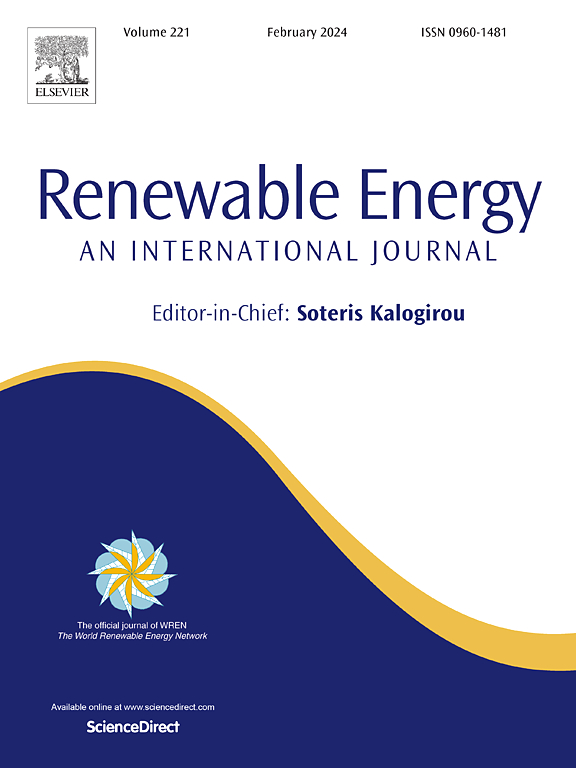Geospatial-based risk analysis of solar plants located in the mountainous region of Gangwon Province, South Korea
IF 9
1区 工程技术
Q1 ENERGY & FUELS
引用次数: 0
Abstract
The rapid decline of fossil resources and environmental concerns have led to an increase in the use of renewable energy. Solar energy is currently the most widely available renewable energy source used in the world and is gaining popularity globally. However, climate change poses an enormous threat even to solar energy infrastructure, as it increases the frequency and intensity of natural disasters. This study investigates the risk of solar photovoltaic power stations (SPVPs) in the Gangwon region of South Korea to landslides, a common hazard in mountainous regions of the Korean Peninsula. The analysis involves evaluating the landslide susceptibility modeling through a logistic regression approach, quantifying the risk of solar plants, and proposing mitigation measures to minimize the vulnerability. We identified that 8.27 % of SPVPs are located in regions characterized by high to severe landslide hazard levels, highlighting their vulnerability to geological events. Utilizing a risk matrix, we determined that 67 % of solar plant sites pose low risk, while 14 %, 9 %, and 10 % are associated with medium, high, and severe risk levels, respectively. Further, we identified that approximately 9.2 % of existing SPVPs required urgent proactive measures, with 12.2 % necessitating proactive measures overall. The proposed framework highlights the importance of proactive risk management measures such as slope stabilization and drainage improvements, which are necessary to safeguard SPVPs from landslides and ensure the long-term viability of renewable energy infrastructure in hazard-prone regions.
韩国江原道山区太阳能发电厂的地理空间风险分析
化石资源的迅速减少和对环境的关注导致可再生能源的使用增加。太阳能是目前世界上使用最广泛的可再生能源,在全球范围内越来越受欢迎。然而,气候变化甚至对太阳能基础设施构成了巨大的威胁,因为它增加了自然灾害的频率和强度。本研究调查了韩国江原地区太阳能光伏电站(SPVPs)对山体滑坡的风险,山体滑坡是朝鲜半岛山区的常见灾害。分析包括通过逻辑回归方法评估滑坡敏感性模型,量化太阳能发电厂的风险,并提出减少脆弱性的缓解措施。我们发现8.27%的spvp位于滑坡危险性高到严重的地区,突出了它们对地质事件的脆弱性。利用风险矩阵,我们确定67%的太阳能发电厂构成低风险,而14%、9%和10%分别与中等、高和严重风险水平相关。此外,我们发现大约9.2%的现有spvp需要紧急主动措施,12.2%的spvp需要总体主动措施。拟议的框架强调了积极主动的风险管理措施的重要性,如边坡稳定和排水改善,这些措施对于保护SPVPs免受山体滑坡的影响,并确保灾害易发地区可再生能源基础设施的长期可行性是必要的。
本文章由计算机程序翻译,如有差异,请以英文原文为准。
求助全文
约1分钟内获得全文
求助全文
来源期刊

Renewable Energy
工程技术-能源与燃料
CiteScore
18.40
自引率
9.20%
发文量
1955
审稿时长
6.6 months
期刊介绍:
Renewable Energy journal is dedicated to advancing knowledge and disseminating insights on various topics and technologies within renewable energy systems and components. Our mission is to support researchers, engineers, economists, manufacturers, NGOs, associations, and societies in staying updated on new developments in their respective fields and applying alternative energy solutions to current practices.
As an international, multidisciplinary journal in renewable energy engineering and research, we strive to be a premier peer-reviewed platform and a trusted source of original research and reviews in the field of renewable energy. Join us in our endeavor to drive innovation and progress in sustainable energy solutions.
 求助内容:
求助内容: 应助结果提醒方式:
应助结果提醒方式:


